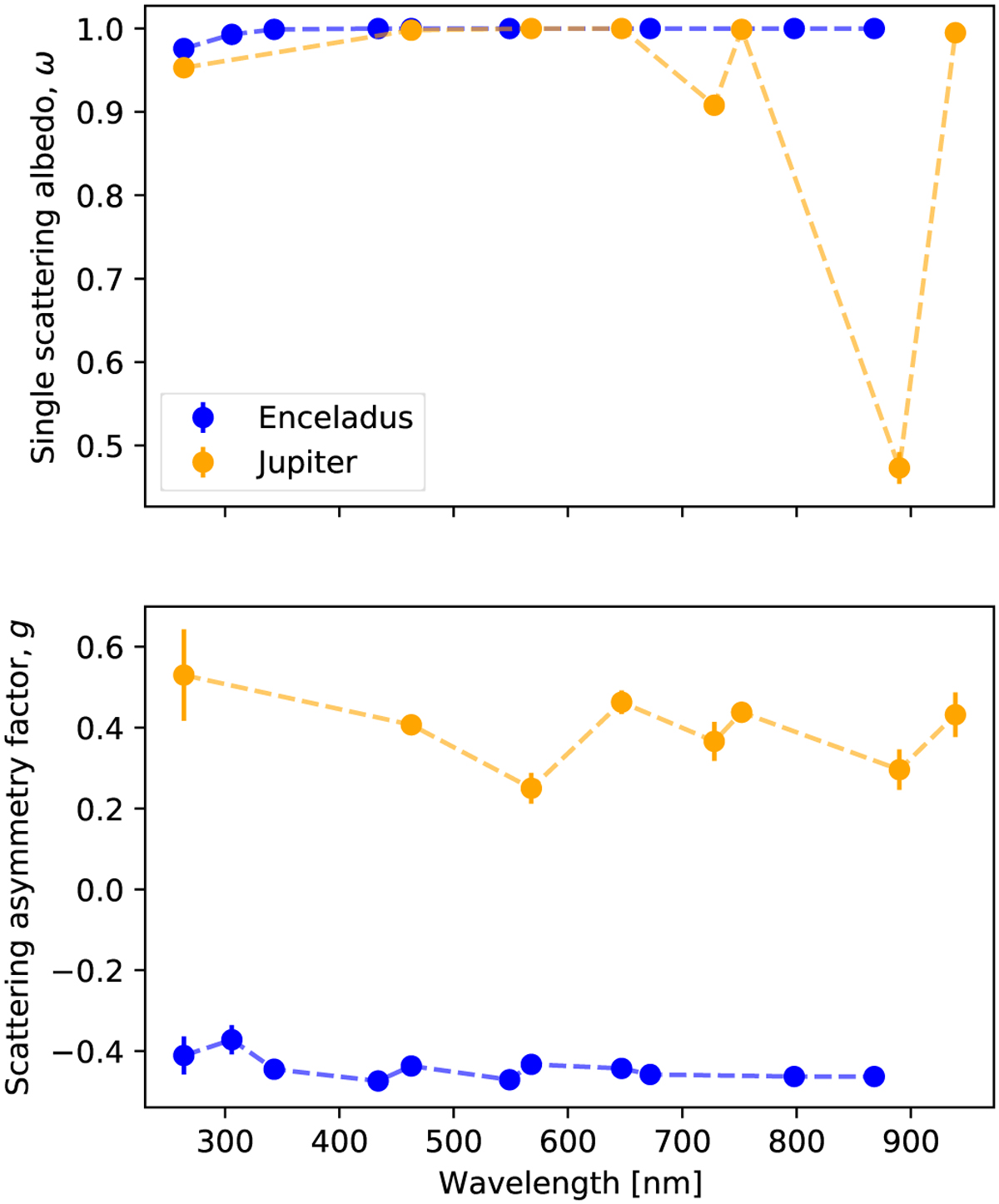Fig. 7

Download original image
Fitted values of the scattering asymmetry factor, g, and the single-scattering cross section, ω, across wavelength for Jupiter (orange) and Enceladus (blue). In the first panel, we see the single scattering albedo decrease (i.e. more absorption) around 750 and 900 nm for Jupiter, which is attributed to the methane absorption bands. We do not see this feature in Enceladus, since it has no considerable atmosphere. Both Jupiter and Enceladus show no trends in the asymmetry factors (second panel) across the wavelength range. This could imply, without taking into account surface roughness, that the size of the scattering particles are always equivalent to the wavelengths in this range, and therefore inhomogenous in these cases. For Enceladus, g is significantly lower, and negative, indicating that most of the light that hits the scattering particles (on the surface) is reflected backwards. This follows our intuition since Enceladus has an icy surface and no atmosphere, compared to Jupiter’s thick atmosphere and no solid surface.
Current usage metrics show cumulative count of Article Views (full-text article views including HTML views, PDF and ePub downloads, according to the available data) and Abstracts Views on Vision4Press platform.
Data correspond to usage on the plateform after 2015. The current usage metrics is available 48-96 hours after online publication and is updated daily on week days.
Initial download of the metrics may take a while.


